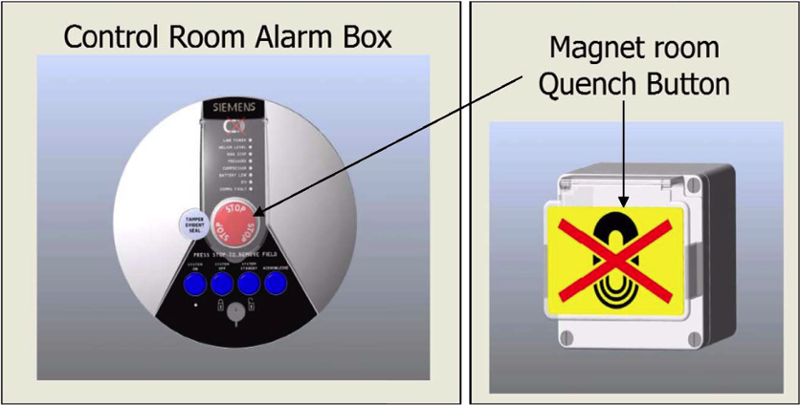Informational Handout For Emergency Personnel
Facility for Education & Research in Neuroscience (FERN)
Emory University, Atlanta, Georgia
Located in the PAIS Building, #180, 36 Eagle Row, Emory University, Atlanta, Georgia 30322.
This document contains information for safety and emergency personnel (police, fire, EMT) about the MRI (magnetic resonance imaging) magnet in FERN located in the PAIS Building, Suite 180, 36 Eagle Row, Emory University, Atlanta, Georgia 30322.
The FERN is located on the west side of the PAIS Building. Attached is a drawing showing the relative location of the facility within the building.

The FERN is composed of several rooms, see attached floor plan.
These several rooms and their uses are:
Room 188A: Interview and screening area.
Room184B: Dressing room
Room183: Restroom.
Room186: The Mock MRI scanner room.
Room 192: Control room for MRI Scanner
Room 190: MRI Scanner Magnet Room
Room 188: Equipment Room
Only one room in the FERN suite requires special consideration/action by emergency personnel. Room 190, which contains the MRI magnet itself, has special risks and safety precautions associated with it.
The MRI is a very strong magnet. This magnet is so strong that it creates a magnetic pull throughout the entire room. The magnet can actually cause some metal objects to fly through the air toward the magnet, with the potential to injure anyone in the path of the flying object. Also, if an individual who has any metal object in their body enters the magnet room it is possible for that metal object inside the body to move and possibly injure the person. THE MAGNET IS ALWAYS ON! No person, safety/emergency personnel or other, should enter the MRI magnet room if they have any of the following medical/surgical conditions:
- have a pacemaker or defibrillator,
- have a stent,
- have an aneurism clip
- have been injured by a metallic object that was not removed
- have a cochlear (ear) or middle ear implant
- have had surgery involving a metallic implant (e.g. knee or hip replacement)
- is a woman and has an intra-uterine device (IUD)
- have dental braces or dentures containing metal
- have body piercings (e.g. navel ring, ear rings, etc.)
- have a deep brain stimulator implant.
None of the following items should be on or be worn by any person entering the MRI magnet room:
- jewelry (e.g. wristwatch, rings, necklace, etc.)
- hair accessories (e.g. bobby pins, burettes, hair elastic, etc.)
- wallet, credit cards
- any medical objects (e.g. hearing aid, etc.)
Emergency and safety personnel should be especially mindful that absolutely no medical equipment, tools or weapons should ever enter the MRI magnet room:
- ladders containing any metal
- fire extinguishers
- fire axe
- weapons
- non MR safe gurney
- metal medical instruments
- tools (e.g. wrench, pliers, hammer, etc.)
The magnet room (room 190) is locked whenever an MR Operator is not present. Except in cases of extreme urgency, it is advisable to contact one of the emergency contact personnel listed below to escort emergency personnel into the magnet room.
Gregory Berns, 404-727-2556, gberns@emory.edu, cell: 404-561-8551
Kate Revill, 404-727-5446, kate.revill@emory.edu, cell: 404-276-7804
If an accident occurs (for instance someone is pinned against the magnet by a metal object) the following emergency procedures should be used. The worst case would be that additional personnel enter the room to aid the victim of the accident without first screening themselves for metal objects, thus causing further accidents. Assess the level urgency involving the victim and act based on the following guidelines.
a) If there is no serious injury to the victim, remove the victim from the magnet room.
b) If the victim is pinned by a metal object, enlist the aid of several individuals to help remove the object (all personnel entering the magnet room should be free of metallic objects).
c) If the victim has sustained a life threatening injury from a metallic projectile and remains pinned to the magnet, then magnet can be shut down (or "quenched"). Quenching a magnet is a VERY serious response and should ONLY be performed in the case of serious bodily injury to a victim due to projectile ferromagnetic objects. A quench button is located in the magnet room (room 190) and in the control room (room 192). Importantly, a quench results in the emission of large amounts of helium, which can cause cryogen burns. The release of helium also quickly displaces the air from the room, resulting in a deadly low oxygen environment if the ventilation system fails and the magnet door is closed.

The FERN suite is equipped with fire detection equipment, fire pull stations, and ceiling mounted sprinklers.

